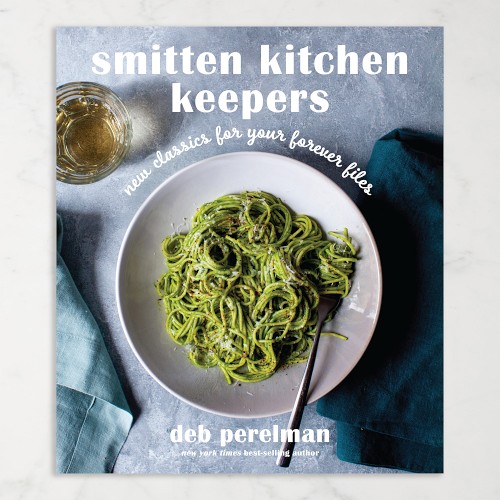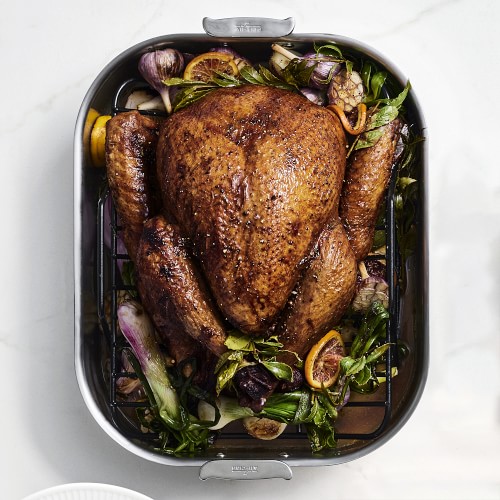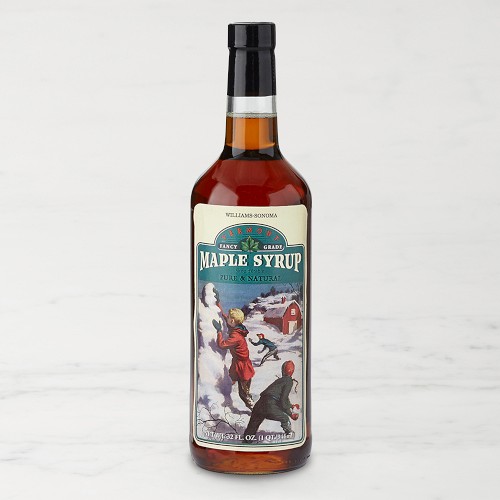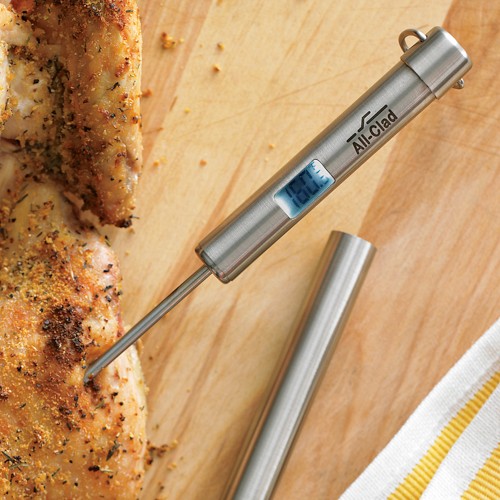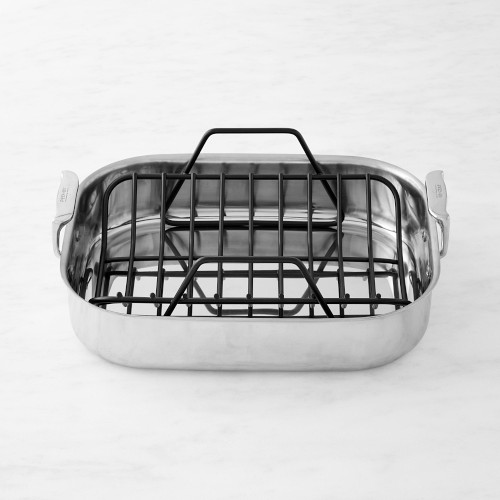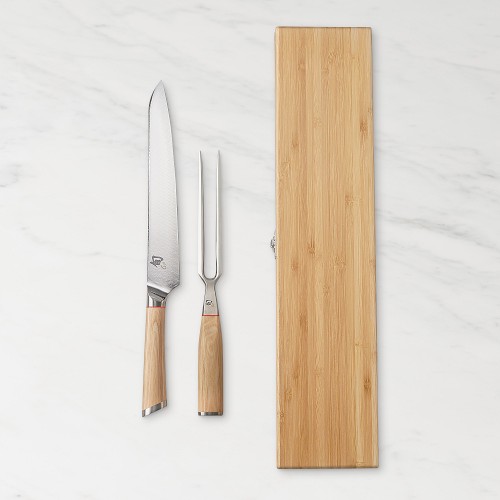
Dry-Brined Turkey with Roasted Onions and Gravy
For years, Deb Perelman never had a turkey recipe on her website, Smitten Kitchen. Among other reasons, another family member usually hosted Thanksgiving dinner. But then Deb started hosting Friendsgivings and a few turkeys later, she has a lot of opinions about the bird, including how to treat it in a way that it won’t dry out in all the hours it takes to safely cook through. She has wet-brined and dry-brined, and the latter is the clear winner.
Her second opinion is that if you’re putting anything besides a lot of quartered onions under your turkey, you’re missing out. After a few hours in the oven collecting buttery, salty drippings, the onions become otherworldly: deeply caramelized to the point of jammy sweetness, but charred and salty too.
Deb’s third opinion is her view on All Things Thanksgiving: the recipes should be rivetingly simple. The first year, she kept her turkey really basic, seasoning with only salt and pepper and basting with butter; the results were juicy and delicious. Later, when slow roasting a chicken, she brushed the well-salted skin with a mixture of butter, maple syrup and gochujang chile paste and it was astoundingly good. So she used the mixture on a slow-roasted turkey, which produced a wonderful salty-spicy-sweet finish.
This recipe includes Deb’s method for dry-brining and slow-roasting the turkey, plus a very simple gravy to serve alongside the bird.
Ingredients:
For the turkey:
- 1 fresh turkey, 12 to 16 lb. (7 to 8 kg)
- Kosher salt and freshly ground pepper
- 8 to 10 medium onions, half red, half yellow, peeled and quartered
- 1 to 2 Tbs. sunflower, safflower or another high-heat friendly oil
- 8 Tbs. (1 stick) (4 oz./125 g) unsalted butter, melted
- 4 Tbs. maple syrup
- 1 Tbs. chile paste (gochujang, harissa or chipotle), plus more to taste
For the very simple gravy:
- 8 Tbs. (1 stick) (4 oz./125 g) unsalted butter
- 2/3 cup (3 3/4 oz./115 g) all-purpose flour
- 2 Tbs. dry Marsala or cider vinegar
- 8 cups (2 l) turkey or chicken stock (homemade chicken stock or Better Than Bouillon turkey base)
- Kosher salt and freshly ground pepper
Directions:
To prepare the turkey, 1 to 2 days before serving: Make sure the giblets (usually in a bag) are removed from the turkey’s cavity. Sprinkle the turkey all over with kosher salt, using about 1 Tbs. per 4 lb. (2 kg) of bird, including some into the cavities. You can do this on a rack in a roasting pan. Loosely cover with plastic wrap and place in the fridge for 1 to 2 days and until 4 to 5 hours before you want to serve it.
1 to 2 hours before roasting: Remove the plastic wrap and discard any juices that have collected around the bird. Let it come to room temperature, which will take 1 to 2 hours. No need to rinse any salt off the bird; it’s all as it should be.
2 1/2 to 3 1/2 hours before serving: Position a rack on the lowest level of the oven and preheat the oven to 450°F (230°C). If you plan to stuff the turkey with anything, do so now. Truss the legs (tie them together) with kitchen twine or any other string you have around.
In a large bowl, toss the onions with a splash of oil (don’t worry about seasoning, they’ll collect it from the pan) and arrange around the turkey. In a small bowl, combine 1 Tbs. of the melted butter with the maple syrup and chile paste, whisking until smooth. Brush this—or use your hands to coat—all over the turkey, leaving none behind. Have a big piece of aluminum foil nearby for when you will want to cover the turkey.
Roast the turkey for 25 to 30 minutes, then—this is very important—reduce the oven temperature to 350°F (180°C) and continue roasting the bird until an instant-read thermometer inserted into the thickest part of the breast registers 150° to 155°F (65° to 68°C).
Beginning when you reduce the heat, periodically baste the turkey with 1 to 2 Tbs. of the remaining melted butter and then, when you’re out of butter, with the juices from the pan.
This turkey is going to brown fairly quick and get quite dark. Don’t fret, it will not taste burnt, but go ahead and put the foil on when it gets as dark as you can stand it. Rotate the pan in the oven a couple of times and turn the onions in the pan over once to ensure even cooking. Remove the foil for the last 5 to 10 minutes of roasting so the skin crisps up again.
A 14- to 16-lb. (6- to 8-kg) bird takes a total of 2 to 2 1/2 hours of roasting. A 19 1/2-lb. (9.75-kg) bird once took over 3 hours. Keep in mind that if you’re opening and closing the oven door a bunch of times to move other dishes around, it will take longer to cook (up to 30 minutes).
Rest, carve and serve: Let the turkey rest at room temperature for 15 to 20 minutes before carving; the carving will take 20 minutes or so, depending on your comfort level. The resting time will allow the juices to be locked in and the turkey to carry over to an internal temperature of 165°F (74°C). While the turkey rests, rewarm any sides that need it and make the gravy.
To make the gravy, in an empty pot or in your emptied roasting pan, melt the butter over medium heat and stir in the flour. Cook this mixture, whisking, for 3 minutes. Add the Marsala or vinegar and cook, whisking, for 1 minute more. Add the stock a little at a time, whisking constantly to prevent lumps, then bring to a simmer, whisking occasionally. Season with salt and pepper.
Before carving the turkey, Deb recommends watching a video (such as this one) that shows step-by-step instructions. Make sure your knife is really, really sharp to get those clean cuts.
The turkey is going to spill a lot of juices while you carve it. Place your cutting board inside a rimmed baking sheet to collect the juices as you carve. Pour some over the sliced turkey (save any left for the gravy) and add a final sprinkle of salt and pepper before serving to keep it warm and seasoned. Arrange the onions all around and serve the gravy alongside. Serves 12 to 16.
Notes:
Buying turkeys: Heritage- or pasture-raised tend to taste a lot better. Estimate 1 to 1 1/2 lb. (500 to 750 g) per person. If your turkey is frozen, defrost 2 to 3 days before in the fridge. You cannot defrost it at room temperature; it’s just not safe.
Salt: Deb uses Diamond brand kosher salt, which weighs 135 grams per cup, while Morton kosher salt is 230 grams per cup and David’s kosher salt, 288 grams. If you’re using another brand besides Diamond, use about half the amount of salt to avoid significantly oversalting your turkey.
Doneness: The turkey is done when a thermometer inserted into the thickest part of the breast registers 150° to 155°F (65° to 68°C) or into the thigh, 165°F (74°C). Deb prefers checking the breast. Thighs are smaller and often hit the “done” temperature sooner but are more forgiving of a few extra degrees. Nobody is forgiving of undercooked turkey breast.
Recipe courtesy of Deb Perelman, cookbook author and founder of Smitten Kitchen









